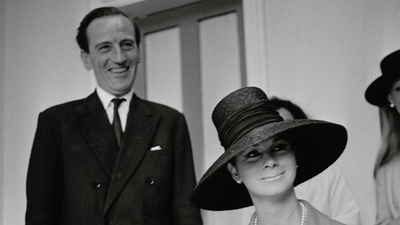
Corbett v Corbett
1970 Probate, Divorce and Admiralty Division
Precedent setting. This was the first time an English court had been asked to decide the sex of an individual in the context of medical procedures designed to alter genitalia to mimic those of the opposite sex. The court held that birth chromosomes, gonads, and genitals establish sex regardless of any psychological condition.
Summary
George Jamieson was born in 1935. At 18, in hospital for depression, he was diagnosed as “a constitutional homosexual who says he wants to become a woman”. He later became a female impersonator at the Carousel Nightclub in Paris, described as “the Mecca of every female impersonator in the world”. After a period of taking oestrogen, at 25 he underwent a “sex change operation” which consisted of “amputation of the testicles and most of the scrotum, and the construction of a so-called ’artificial vagina‘.”
Six months later Jamieson met the aristocrat Captain Arthur Corbett, the third Baron Rowallan. Corbett, 40, was unhappily married, a father of four, and a transvestite who kept his habit – and his sexual liaisons with other women and with men – secret from his wife. Corbett’s cross-dressing was not as effective as Jamieson’s: he said of himself “I didn’t like what I saw. You want the fantasy to appear right. It utterly failed to appear right in my eyes.” On meeting Jameison, he said, he was mesmerised. “This was so much more than I could ever hope to be. […] It far outstripped any fantasy for myself.”
Over the next three years Corbett became obsessed with Jamieson. They had an on-off relationship (but with no intimacy). With Corbett’s assistance, Jamieson changed his name to April Ashley and obtained a passport. “Attempts to persuade the superintendent registrar to change [her] birth certificate, however, failed.” The Ministry of National Insurance issued a woman’s insurance card, and now treated Ashley as a woman for national insurance purposes.
Ashley was described as living as and passing as a woman “more or less successfully”. Mr Justice Ormrod said:
“[Her] outward appearance, at first sight, was convincingly feminine, but on closer and longer examination in the witness box it was much less so. The voice, manner, gestures and attitude became increasingly reminiscent of the accomplished female impersonator.”
Following Corbett’s divorce from his first wife in 1963, the couple married in Gibraltar, under a “special licence”: there was no legal advice on the validity of the marriage. After the marriage they spent no more than 14 days together, and attempts at sexual intercourse were unsuccessful. As fantasy became reality Ashley and Corbett decided to call it off, and Corbett asked the court to declare that there had been no marriage, since Ashley was in fact a man. Ashley disagreed, saying he was a woman (and thus if the marriage ended in divorce he would be entitled to some of Corbett’s estate). The court considered medical evidence from a range of sources and decided that Ashley remained a man.
“It has been established that the respondent is not, and was not, a woman at the date of the ceremony of marriage, but was, at all times, a male.”
This was the first occasion on which a court in England has been called on to decide the sex of an individual (the technique of vagino-plasty had recently been invented). This case established features which establish a person’s sex in English Law that still stand, namely:
- chromosomes (having XX, XY or some other anomalous combination)
- gonads (having, or having had, testicles or ovaries)
- genitals and internal sex organs.
The judge and the medical experts considered the question of whether if these features are congruent but psychological factors are ‘abnormal’, the person should be classified as a case of inter-sex. Mr Justice Ormrod decided not.
Ormrod concluded:
“The respondent has been shown to have XY chromosomes and, therefore, to be of male chromosomal sex; to have had testicles prior to the operation and, therefore, to be of male gonadal sex; to have had male external genitalia without any evidence of internal or external female sex organs and, therefore, to be of male genital sex; and psychologically to be a transsexual.”
Commentary
The court used the term “gender” as meaning the sex which someone is treated as by society, but said that while this could be used for some purposes, there were others, such as marriage, in this case, where sex matters.
The judgment considers the difference between a transvestite and a transsexual, and also notes that areas of life and law can be classified into those in which the sex of the individuals concerned is irrelevant, relevant or an essential determinant of the nature of the relationship.
“Sex change operations” were still in their infancy and the court noted that “The purpose of these operations is, of course, to help relieve the patient’s symptoms and to assist in the management of their disorder; it is not to change their patient’s sex…”, further noting that the signed consent doctors required from their patients stated:
“’I … of … do consent to undergo the removal of the male genital organs and fashioning of an artificial vagina as explained to me by … (surgeon). I understand it will not alter my male sex and that it is being done to prevent deterioration in my mental health. […]
(Signature of Patient)’”
Contemporary comments from medical professionals show doubt about the therapeutic efficacy of these procedures and they were rarely recommended.
